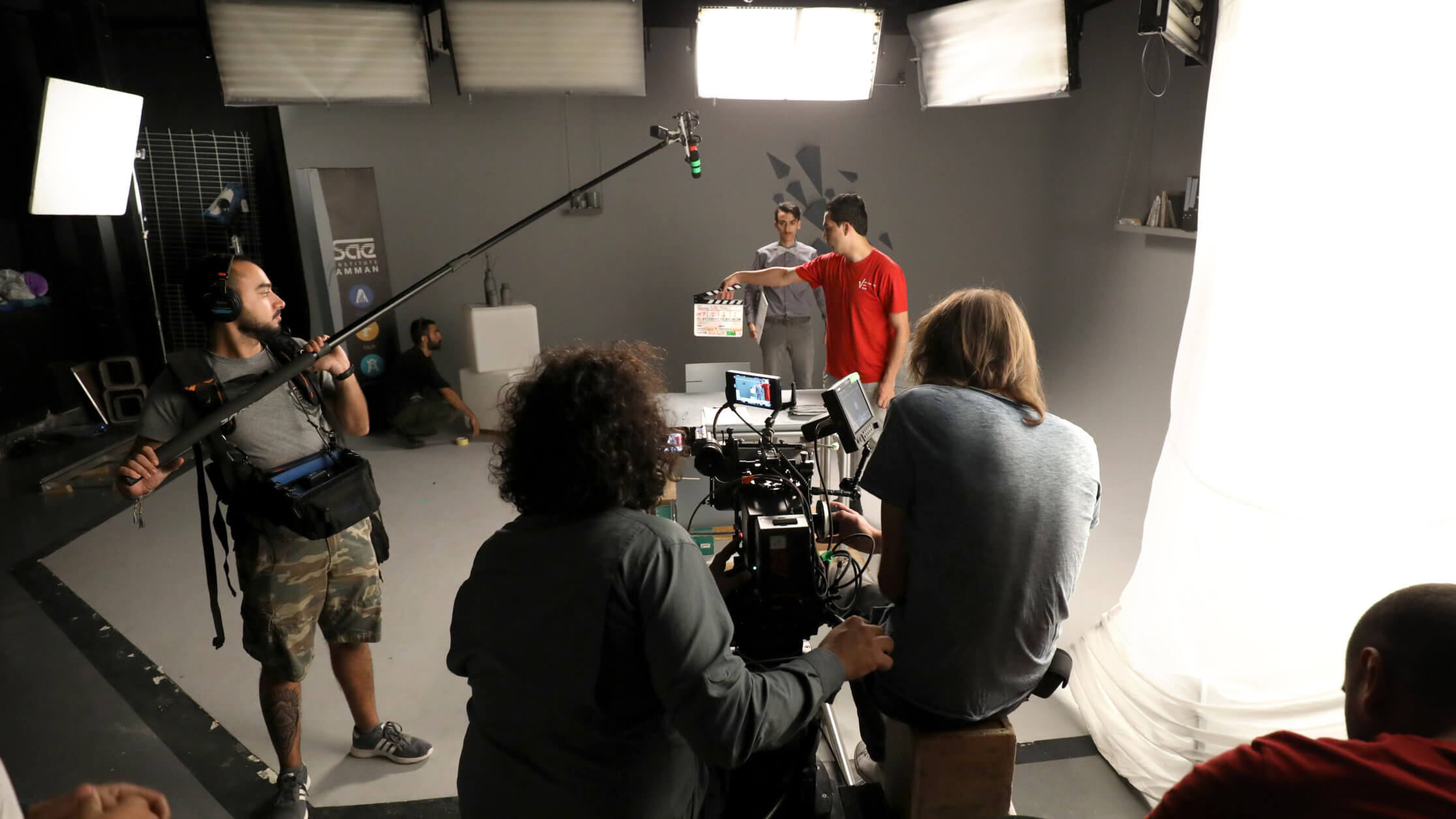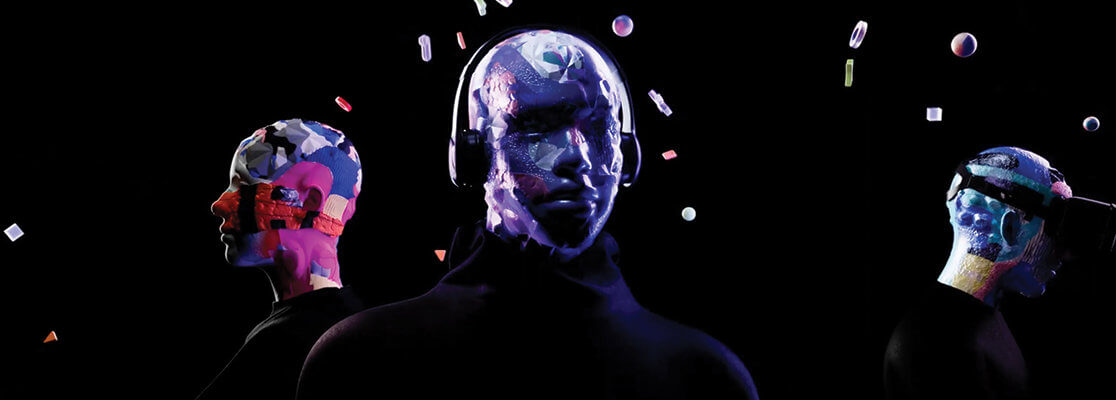Certificate/Short Course in Complete Media Production (CMP)

Amman
Amman
Entry Requirements
Certificate/Short Course in Complete Media Production (CMP)
Domestic Entry Requirements
Certificate/Short Course in Complete Media Production (CMP)
International Entry Requirements
YOUR MEDIA CAREER BEGINS NOW
Course Structure
Digital Marketing (45 Hours)
- Course Overview:
This professional training program is carefully designed to provide candidates with the knowledge and skills required to plan, implement and report digital marketing campaigns. The training course will start with the basics of digital marketing and go all the way up to the advanced up-to- date topics, to make sure that candidates are on top of the latest trends in the continuously growing field.
- Topics:
• Introduction to Digital Marketing.
• Search Engine Optimization (SEO).
• Google Ads.
• Social Media Advertising.
• Email Marketing.
• Analytics and reporting.
This professional training program is carefully designed to provide candidates with the knowledge and skills required to plan, implement and report digital marketing campaigns. The training course will start with the basics of digital marketing and go all the way up to the advanced up-to- date topics, to make sure that candidates are on top of the latest trends in the continuously growing field.
- Topics:
• Introduction to Digital Marketing.
• Search Engine Optimization (SEO).
• Google Ads.
• Social Media Advertising.
• Email Marketing.
• Analytics and reporting.
Graphic Design (60 Hours)
- Course Overview:
This part of the course introduces its candidates to the world of graphic design and visual communication. It equips participants with professional skills enabling them to create and design their own publications for print. It will also give candidates an overview of the complete professional Graphic Design production process: from the development of visual concepts and communication strategies, project planning and pitching to the design implementation in professional graphic software, pre-press, quality control and finally the successful presentation of the final product. Graphic designers today must be ready to tackle a wide range of projects from identity design to editorial design to product and packaging design. In this graphic design course, you'll establish a firm foundation for professional design work. Gain insights from industry veterans and explore the challenges of designing posters, logos, magazine covers, book layouts, and brand identities. Hone your design process, as you research each project, develop concepts, work with expert instructor feedback, and begin to develop pieces for your portfolio.
- Topics:
Adobe Photoshop: is the industry standard tool used for digital imaging, which makes Photoshop expertise a valuable commodity in the workplace of today and tomorrow. Learning Photoshop is also a good way to learn imaging concepts.
• Design elements and balance.
• Text layers.
• Layers and layer modes.
• Typography.
• Transform tools.
• Layer masking.
• Selection tools.
• Double exposure.
• Color correction.
• Adjustment layers.
Adobe Illustrator: is the industry standard vector graphics program used by graphic designers, illustrators, and people in the fashion industry and multimedia artists among others.
• Color wheel and schemes.
• Logo design concept.
• Pen tool techniques.
• Brand identity
• Typography.
• Stationary components and stationary design.
Adobe InDesign: Offers all the features and flexibility you’ll need to publish professional-quality layouts. Candidates will learn to Publishing brochures, newsletters, reports, and other print.
• Document setup.
• Creating master pages.
• Auto page numbering.
• Placing text and images.
• Character styles.
• Paragraph styles .
• Preparing file for final production and exporting.
• Creating mockups.
This part of the course introduces its candidates to the world of graphic design and visual communication. It equips participants with professional skills enabling them to create and design their own publications for print. It will also give candidates an overview of the complete professional Graphic Design production process: from the development of visual concepts and communication strategies, project planning and pitching to the design implementation in professional graphic software, pre-press, quality control and finally the successful presentation of the final product. Graphic designers today must be ready to tackle a wide range of projects from identity design to editorial design to product and packaging design. In this graphic design course, you'll establish a firm foundation for professional design work. Gain insights from industry veterans and explore the challenges of designing posters, logos, magazine covers, book layouts, and brand identities. Hone your design process, as you research each project, develop concepts, work with expert instructor feedback, and begin to develop pieces for your portfolio.
- Topics:
Adobe Photoshop: is the industry standard tool used for digital imaging, which makes Photoshop expertise a valuable commodity in the workplace of today and tomorrow. Learning Photoshop is also a good way to learn imaging concepts.
• Design elements and balance.
• Text layers.
• Layers and layer modes.
• Typography.
• Transform tools.
• Layer masking.
• Selection tools.
• Double exposure.
• Color correction.
• Adjustment layers.
Adobe Illustrator: is the industry standard vector graphics program used by graphic designers, illustrators, and people in the fashion industry and multimedia artists among others.
• Color wheel and schemes.
• Logo design concept.
• Pen tool techniques.
• Brand identity
• Typography.
• Stationary components and stationary design.
Adobe InDesign: Offers all the features and flexibility you’ll need to publish professional-quality layouts. Candidates will learn to Publishing brochures, newsletters, reports, and other print.
• Document setup.
• Creating master pages.
• Auto page numbering.
• Placing text and images.
• Character styles.
• Paragraph styles .
• Preparing file for final production and exporting.
• Creating mockups.
Digital Photography (45 Hours)
- Course Overview:
The participants of this part are expected to acquire a solid grasp of the fundamental principles of photography, and to use these
principles in order to capture photographs with greater technical accuracy and artistic expression. This will be accomplished through both
theoretical understanding and practical exercise of the principles that will be addressed throughout the duration of the course.
- Topics:
• Introduction to digital photography.
• Cameras & Lenses.
• Light Setup and Equipment.
• Image Editing and Retouching
The participants of this part are expected to acquire a solid grasp of the fundamental principles of photography, and to use these
principles in order to capture photographs with greater technical accuracy and artistic expression. This will be accomplished through both
theoretical understanding and practical exercise of the principles that will be addressed throughout the duration of the course.
- Topics:
• Introduction to digital photography.
• Cameras & Lenses.
• Light Setup and Equipment.
• Image Editing and Retouching
Video Production (45 Hours)
- Course Overview:
A course in the essentials needed for filmmaking and storytelling pipeline. By the end of this training course, participants will be able to identify their creative vision and execute it using universal film tools, techniques and terminology and production requirements. In this training course, participants will be introduced to the craft of digital filmmaking for both fiction/non-fiction, film production pipeline, and how to create short videos using all the needed tools (software and hardware). Throughout the course participants will be organized in groups, and will be assigned to do a short fiction OR non- fiction (documentary) scenes, and they will shoot those scenes inside the school, with specific duration and subjects assigned by our lecturers, the scenes should reflect the gained experience throughout the course. This course aims to enable students to create a short script and how feature films are written and structured. Moreover, candidates will be able to breakdown scripts for production phase and understanding the duties of each crew member. Lastly, they will be able to work with film sound and how to edit and finalize their short films.
-Topics:
• Introduction to Filmmaking.
• Video Editing.
• Camera and sound production.
• Producing, Roles and Preparations.
• Shooting and Supervision.
A course in the essentials needed for filmmaking and storytelling pipeline. By the end of this training course, participants will be able to identify their creative vision and execute it using universal film tools, techniques and terminology and production requirements. In this training course, participants will be introduced to the craft of digital filmmaking for both fiction/non-fiction, film production pipeline, and how to create short videos using all the needed tools (software and hardware). Throughout the course participants will be organized in groups, and will be assigned to do a short fiction OR non- fiction (documentary) scenes, and they will shoot those scenes inside the school, with specific duration and subjects assigned by our lecturers, the scenes should reflect the gained experience throughout the course. This course aims to enable students to create a short script and how feature films are written and structured. Moreover, candidates will be able to breakdown scripts for production phase and understanding the duties of each crew member. Lastly, they will be able to work with film sound and how to edit and finalize their short films.
-Topics:
• Introduction to Filmmaking.
• Video Editing.
• Camera and sound production.
• Producing, Roles and Preparations.
• Shooting and Supervision.
Motion Graphics By Using Adobe After Effects (45 Hours)
- Course Overview:
As one of the courses in the graphic design major sequence, Time-Based Media by using “Adobe After Effects” course will introduce the student to the use of the computer as a creative tool in the creation of motion graphics. Students will extend their creativity with built-in text, shape extrusion, and new mask feathering options. The industry-standard motion graphics and visual effects toolset now brings candidates better ways to work, connecting their desktop and mobile apps with all their creative assets, so they can create your most stunning visuals yet. This training course aims to enable students to understand the work flow of Adobe After Effect software, interpolation types of spatial and temporal key frames, the connection between Adobe Photoshop and Adobe after Effects. Accordingly, participants will be capable of manipulating a video from scratch, and to create a simple animation in a 2.5D space.
- Topics:
• Software Interface, Workspace and getting around.
• Working with masks.
• Performing basic colour correction.
• Working with Photoshop.
• Rendering and output.
As one of the courses in the graphic design major sequence, Time-Based Media by using “Adobe After Effects” course will introduce the student to the use of the computer as a creative tool in the creation of motion graphics. Students will extend their creativity with built-in text, shape extrusion, and new mask feathering options. The industry-standard motion graphics and visual effects toolset now brings candidates better ways to work, connecting their desktop and mobile apps with all their creative assets, so they can create your most stunning visuals yet. This training course aims to enable students to understand the work flow of Adobe After Effect software, interpolation types of spatial and temporal key frames, the connection between Adobe Photoshop and Adobe after Effects. Accordingly, participants will be capable of manipulating a video from scratch, and to create a simple animation in a 2.5D space.
- Topics:
• Software Interface, Workspace and getting around.
• Working with masks.
• Performing basic colour correction.
• Working with Photoshop.
• Rendering and output.
Audio Production (30 Hours)
- Course Overview:
This course is especially designed to train and upskill attendees on the core essentials of audio engineering and audio production focusing with hands-on training on the main operations and undertakings involved in small- studio and home- studio-based productions such as sound recording, editing, mixing and mastering for music and audio-visual work. This will be backed by scientific, practical and theoretical education on the physics of sound, signal flow, signal processing, DAW operating, critical listening, understanding of numbers and formats, as well as acoustic awareness. Throughout the course, the learners will facilitate the knowledge and skills acquired to work on their given assignments, which they need to successfully complete. Upon successful completion of the audio program, attendees will have the skills to record, edit, mix, and master audio productions on a small to medium scale for music, film, animation works, and audio-visual works such as YouTube videos and sketches.
This course is especially designed to train and upskill attendees on the core essentials of audio engineering and audio production focusing with hands-on training on the main operations and undertakings involved in small- studio and home- studio-based productions such as sound recording, editing, mixing and mastering for music and audio-visual work. This will be backed by scientific, practical and theoretical education on the physics of sound, signal flow, signal processing, DAW operating, critical listening, understanding of numbers and formats, as well as acoustic awareness. Throughout the course, the learners will facilitate the knowledge and skills acquired to work on their given assignments, which they need to successfully complete. Upon successful completion of the audio program, attendees will have the skills to record, edit, mix, and master audio productions on a small to medium scale for music, film, animation works, and audio-visual works such as YouTube videos and sketches.

Learn in world class studio environments
Explore the fundamentals of Media Production
Practical, immersive training
All work is project based, with no exams
Be industry-ready
You'll establish a skillset to help “future proof” your journey
Course FAQs
All SAE courses focus on practical, hands-on delivery. The amount of practical time you experience during your study varies depending on your course. You will always have an opportunity to access campus resources and facilities outside of class times; during campus opening hours.
SAE delivers some courses via our online learning portal. You can choose to enrol in either part-time or full-time study loads based on your own personal circumstances. Online enrolment is only available to Australian citizens, and permanent residents living in Australia.
It can vary depending on the course. In most cases, lectures have an average of 15 students.






































